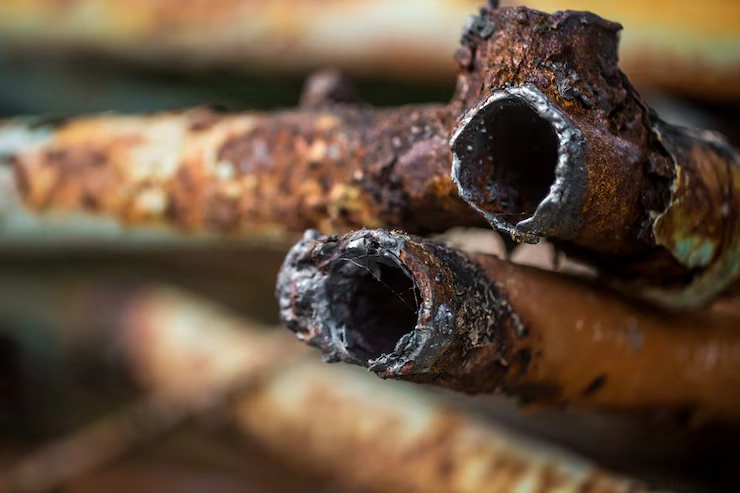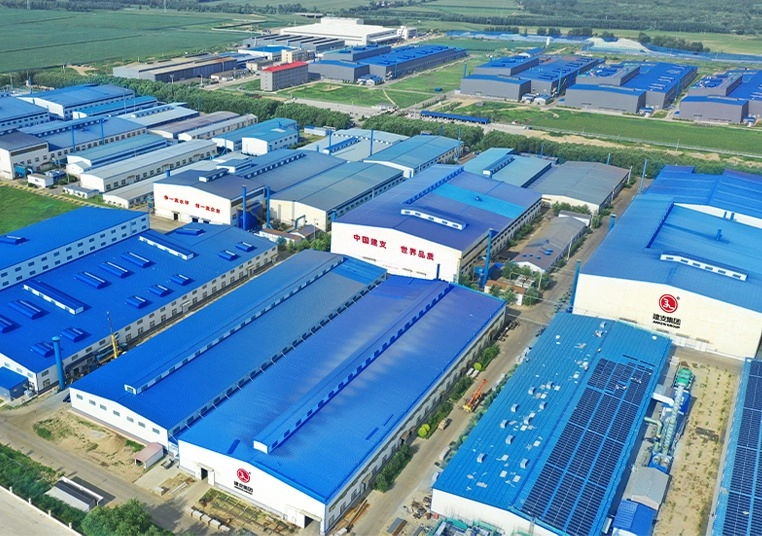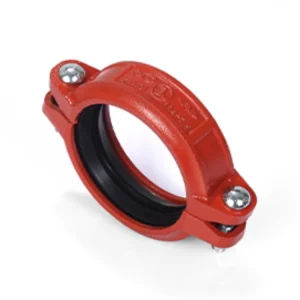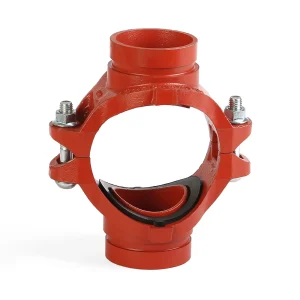
Picking pipe fittings that don’t rust easily is super important for keeping things safe and lasting long in tough places like oil, gas, or water systems. Choosing the right stuff and taking care of them stops big breakdowns and saves cash. This blog dives into why rust-proofing matters, checks out material choices, looks at how the environment plays a role, shares upkeep tips, and shows why VICAST is a solid choice for quality pipe fittings.
Why Is Corrosion Resistance Important in Pipe Fittings?
Rust-proofing is a big deal when choosing pipe fittings. It affects how long they last, how safe they are, and how well they work. Rust can make connectors weak, leading to leaks or even total system crashes. Those problems cost a lot to fix. Going with rust-resistant connectors keeps things running smoothly, especially in rough settings with lots of water or chemicals.
The Role of Corrosion Resistance in Extending Service Life
Rust-resistant pipe fittings hold up way longer. Rust happens when stuff like water, chemicals, or air reacts with the material. This makes it wear out over time. By picking materials that push back against those reactions, connectors stay tough and keep working for years. You don’t have to replace them as often. That saves money on fixes. It also keeps things steady in big-deal systems like oil pipelines or chemical plants. Long-lasting connectors cut down on hassle and costs.
How Corrosion Affects the Structural Integrity of Pipe Fittings
Rust messes up pipe fittings bad. It eats away at the material, so connectors get thinner and flimsier. Over time, tiny holes or dents show up. Those can cause leaks or make the whole thing fall apart. Rusty connectors also can’t handle the pressure they’re built for. That risks breaking the system. These issues mess up work, can be dangerous, and might hurt the environment. That’s why rust-proofing is a top concern.
Industries Where Corrosion-Resistant Pipe Fittings Are Essential
Some jobs deal with really harsh conditions, so they need rust-resistant connectors. Oil and gas pipelines face nasty chemicals and salty air. Chemical plants work with strong acids and stuff that chews up materials. Water treatment setups are always wet and deal with chemicals. Marine jobs get hit with saltwater, which makes rust worse fast. Food and drink businesses need rust-free connectors to stay clean and safe. Using connectors from VICAST’s product range makes sure things stay solid in these tough spots.
What Materials Are Commonly Used for Corrosion-Resistant Pipe Fittings?
Choosing the right material for pipe fittings is key to keeping rust away. Each material has its own ups and downs, depending on what you need it for.
Overview of Stainless Steel, Brass, and Other Alloys
Metal materials are a go-to because they’re tough and fight rust well. Stainless steel is great at handling rust and chemicals. It’s awesome for rough places like chemical plants. Some kinds, like 316 stainless steel, are even better because they’ve got extra bits mixed in. Brass is solid for less intense spots, like water systems, and it’s cheaper. Other metals, like nickel mixes or titanium, do great in crazy conditions, like super hot or acidic places, but they cost more.
| Material | Rust Resistance | Common Uses | Cost |
| Stainless Steel | Strong | Chemical, oil, marine | Medium-High |
| Brass | Okay | Water systems, plumbing | Low-Medium |
| Nickel Mixes | Super Strong | Aerospace, rough settings | High |
| Titanium | Super Strong | Marine, chemical processing | Really High |
Advantages and Limitations of Non-Metallic Materials
Non-metal stuff can also keep rust at bay. PVC is light and cheap. It handles acids and bases fine but doesn’t like high heat. CPVC is close but better for hot water setups. PTFE, sometimes called Teflon, is top-notch for harsh chemicals. But it’s pricey and not as tough when it gets banged up. These materials work for certain jobs but might not be as strong as metals for high-pressure systems.
Factors Influencing Material Selection for Specific Applications
Picking the right material comes down to a few things. The environment matters a lot—think chemicals, heat, or wetness. High-pressure systems usually need tough metals like stainless steel. Money plays a part too. Brass or PVC might be picked for cheaper jobs. Some fields, like food processing, have strict clean rules that guide what materials you can use. VICAST’s product catalog helps folks find the perfect fit for their needs.
How Do Environmental Conditions Impact the Choice of Pipe Fittings?
The place where connectors are used really affects how well they hold up against rust. Heat, chemicals, and water all change how materials perform.
The Effect of Temperature Variations on Corrosion Resistance
Hot or cold changes can make rust worse. High heat makes chemical reactions go faster. That causes stuff like regular steel to rust quicker. Cold can make some materials brittle, so they get weak. Systems that flip between hot and cold put stress on connectors. That can lead to cracks. Materials like stainless steel or PTFE get picked because they stay tough in wild temperatures.
Handling Chemical Exposure in Aggressive Environments
Nasty chemicals, like acids or salts, can wreck connectors fast. In chemical plants, connectors deal with stuff like sulfuric acid that eats weak materials. In marine jobs, saltwater makes rust happen quicker. Nickel mixes or non-metal stuff like PTFE get chosen because they stand up to these chemicals well. They keep things safe and working right.
The Importance of Moisture and Humidity Considerations
Water and wet air are big reasons rust happens. Constant water, like in water treatment or marine jobs, makes rust a huge problem for unprotected metals. High humidity, especially near the coast, also pushes rust along. Rust-proof coatings or materials like stainless steel help protect connectors. They make sure connectors last longer in these wet conditions.
What Are the Maintenance Practices for Enhancing Corrosion Resistance?
Taking good care of pipe fittings is a must to keep rust away. Proper upkeep makes them last longer and stops problems before they start.
Coating and Surface Treatments to Prevent Corrosion
Putting on protective layers helps stop rust. Zinc coatings keep steel safe from rust. Epoxy layers block out chemicals and water. Anodizing makes aluminum connectors tougher against rust. These treatments work like a shield. They protect connectors in rough environments and help them last longer.
Routine Inspection and Cleaning Protocols
Checking connectors often catches rust early. Look for rust spots, little holes, or weird color changes. Cleaning gets rid of dirt or chemical gunk that could start rust. Testing with safe methods checks how strong connectors are. Keeping up with these tasks stops small problems from turning into big, expensive ones.
The Role of Proper Installation in Reducing Corrosion Risks
Setting up connectors the right way cuts down on rust risks. Lining them up properly avoids stress that can cause cracks or rust. Keeping different metals apart stops chemical reactions that make rust. Sealing joints tight keeps water or chemicals out. Good setup, paired with quality connectors from VICAST, makes sure systems stay solid for years.
Why Should You Choose VICAST as Your Reliable Pipe Fittings Supplier?

VICAST is a top pick for quality pipe fittings. They’re known for their know-how, tough materials, and focus on what customers need.
An Overview of VICAST’s Expertise in Manufacturing High-Quality Pipe Fittings
VICAST’s been making pipe fittings for years for stuff like oil, gas, water treatment, and construction. They’ve got modern factories and tight quality checks. Their connectors meet global standards. This know-how makes sure connectors are built to handle rough conditions and work well in any project.
Commitment to Using Durable, Corrosion-Resistant Materials
VICAST uses materials like stainless steel, brass, and special mixes that fight rust. Their connectors are made to stand up to harsh environments. This makes them last long and stay safe. By sticking to industry standards, VICAST makes sure their connectors work great across different jobs.
Customer-Centric Solutions Tailored to Industry Needs
VICAST shines with custom solutions. They make connectors to fit specific projects. Their team gives expert tips on picking materials and setting up connectors. They also help customers all over the world with quick delivery and great support. Got questions? Hit up their contact page to talk about your project.
Conclusion
Recap of the Importance of Considering Corrosion Resistance in Pipe Fitting Selection
Rust-proofing is a must when picking pipe fittings. It keeps systems tough, safe, and working right. Choosing the right materials and keeping up with care helps avoid breakdowns. This makes sure operations stay smooth.
Emphasis on Long-Term Benefits Such as Durability, Safety, and Cost Savings
Rust-resistant connectors pay off big time. They make systems last longer, so you don’t have to replace stuff as much. They keep things safe by stopping leaks or failures that could hurt workers or the environment. They also save cash by cutting down on upkeep and downtime. With VICAST’s quality connectors, industries can get these perks and build systems that last.
Frequently Asked Questions
What Are the Key Indicators That a Pipe Fitting Is Susceptible to Corrosion?
Explanation of Visible Signs and Performance Issues
Check for reddish-brown rust spots on metal surfaces. Little holes or dents mean the material’s wearing out. Leaks or slower flow show rust inside the connector. Looking often helps catch these problems early. That way, you can fix them before they get bad.
Can Corroded Pipe Fittings Be Repaired or Must They Be Replaced?
Insights Into Repair Options Versus Replacement Scenarios
If rust’s just starting, coatings or patches might fix it. But if there’s big damage, like deep holes or cracks, you gotta replace the connector. Badly damaged ones can be unsafe. VICAST’s product range has tough replacements to keep things running smooth.
How Can I Ensure I Am Selecting the Right Material for My Application?
Guidance on Evaluating Material Properties Based on Operational Requirements
Think about the environment—heat, chemicals, or wetness—when picking materials. Make sure the material can take the system’s pressure. Talk to VICAST’s team for help. They can point you to the best connectors for your job.









